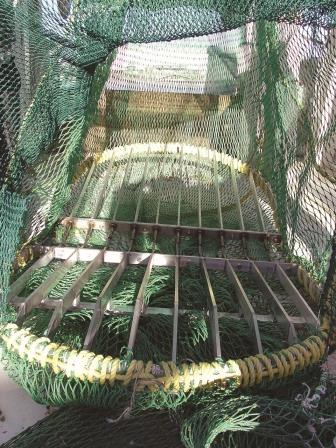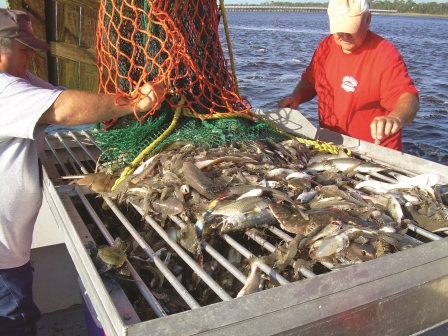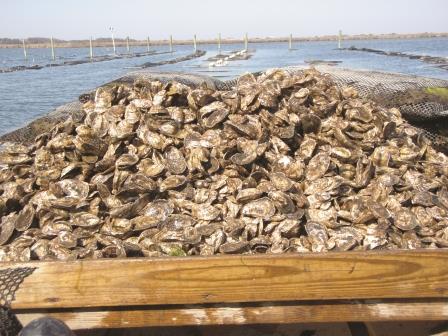PEOPLE AND PLACES: Strongholds of the Coast
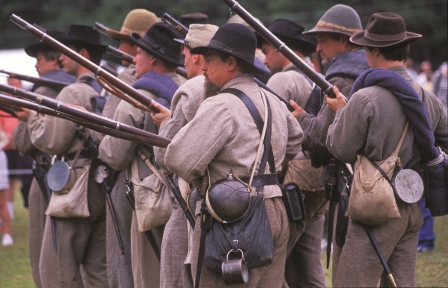
Scattered along the banks of the Cape Fear River, Pamlico Sound and the Atlantic Ocean are several historic coastal forts. Each provides a glimpse into our state’s past, from the American Revolutionary War to as recently as the Persian Gulf War.
Some are visible structural fortifications with noticeable additions of stone, brick or concrete that have aged throughout the years. Others are only identifiable by a North Carolina Highway Historical Marker placed near where the earthwork or stronghold once stood.
FORT MACON
Located in Atlantic Beach, Fort Macon is a state park. “It is a unique place, rich in history and nature, a recreation and an attraction area that will appeal to the family,” says Paul Branch, historian and park ranger.
A unique bit of history occurred at Fort Macon in late 1941. A soldier placed two old Civil War cannonballs in a fireplace of the living quarters to serve as andirons. One cannonball was live and abruptly exploded into a full room of soldiers from the 244th Coast Artillery. Fortunately no one was killed.
This incident “has been remembered ever since as the ‘last shot of the Civil War,’ because the 244th Coast Artillery originally was the Ninth New York National Guard,” Branch recalls in a 1995 issue of Ramparts, a publication of the Friends of Fort Macon.
The pentagonal fort had been constructed between 1826 and 1834 to bolster North Carolina’s coastal defenses, especially to guard Beaufort Inlet and Harbor.
Confederate forces occupied Fort Macon for the first year of the Civil War. It fell to Union control in 1862, after the fort took heavy artillery fire from land and sea. The Union controlled the fort for the remainder of the war and Beaufort Inlet became a vital repair and coaling station for the Union’s Navy blockade.
During the Reconstruction Era, the fortification became a civil and military prison for roughly a decade due to the lack of state and federal penitentiaries. In the early 1900s, the U.S. Army abandoned the site.
North Carolina acquired the fort and surrounding land in 1924 for a public park. After restoration work by the Civilian Conservation Corps during the Depression, the park officially opened in May 1936. This was the second state park, after Mount Mitchell State Park.
In World War II, the U.S. Army garrisoned the old fort to protect the coast against the threat of German U-boats lurking offshore. The Army returned the fort to state control in 1946.
The fort currently is considered “one of the best-preserved examples of 19th-century fortifications in the country,” Branch says. “It is one of the most visited state parks and is a huge tourist draw that brings money to the local economy.” Tours and reenactments depict life in the fort during the Civil War. Fort Macon State Park is open year-round for visitors.
“Whether through a narrated public demonstration on drill, small arms, the artillery pieces or simpler aspects of fort life such as cooking or serving as a sentry, the Living Historians that participate in the programming at Fort Macon State Park help bring the fort to life…literally,” says Lee Gordon, adjutant of the First N.C. Volunteers/11th N.C. State Troops Civil War Reenactment Regiment.
FORT FISHER
Once the largest earthen fortification in the world, Fort Fisher is a state historic site with a namesake state recreation area nearby. Located in Kure Beach, Fort Fisher is “rich in Civil War history, and is in a fabulous location near the coast and Cape Fear River,” says Si Lawrence, III, the historic site’s public information officer.
“The fort is sacred ground where thousands of soldiers gave their lives for what they believed was right. The fort gives visitors the opportunity to learn about and appreciate those sacrifices,” Lawrence explains. It was constructed in 1861 to protect valuable blockade-runners traveling to ports along the Cape Fear River. In particular, the Confederate forces needed the port town of Wilmington to export their naval supplies. Wilmington would become the last southern port open to trade during the Civil War.
Fort Fisher was attacked twice through the Civil War. During the first attempt on Christmas Eve 1864, the Confederates thwarted the Union forces by land and sea.
General Ulysses S. Grant considered this attack “a gross and culpable failure,” the N.C. Historic Sites website notes. Union troops intentionally exploded USS Louisiana off the shoreline of Fort Fisher with the objective of destroying the earthen walls of the fort.
The ship was loaded with 215 tons of powder and anchored roughly 300 yards from the Northeast Bastion of Fort Fisher. However, it drifted off location. When USS Louisiana exploded, no damage was caused to Fort Fisher because the explosion occurred so far off target, the online history continues.
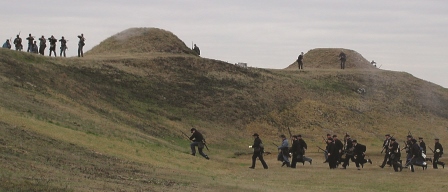
Secretary of the Navy Gideon Welles called this failure “a mere puff of smoke.”
The second battle ended in favor of the Union in January 1865. “It was the largest land and sea battle until World War I,” Lawrence says. Thousands of casualties occurred, including a magazine explosion that claimed more than 200 men on both sides.
When Chase Whiting, senior Confederate officer general, surrendered the fort on Jan. 15, 1865, he sent orders to destroy and evacuate neighboring forts Caswell and Johnson. Three months after the North Carolina forts and ports fell, the Civil War ended.
Fort Fisher saw use again during WWII. The grounds were used as a remote training base for anti-aircraft artillery and automatic weapons training. An airstrip was built, destroying a large piece of the historic earthwork.
To this day, only 10 percent of the historic earthwork remains, mainly due to erosion by the Atlantic Ocean, destruction during the Civil War and construction during WWII.
“In the mid 1990s, the U.S. Army Corps of Engineers built a rock revetment in an attempt to slow the effects of Mother Nature,” Lawrence says.
Hundreds of thousands of tourists visit the Fort Fisher area annually. The historic site offers guided costume tours, a fiber-optic battle map and small arms demonstrations. Every five years, Fort Fisher reenacts the Civil War battle at the fort that resulted in its surrender. The next battle reenactment will be in January 2015.
Fort Fisher is open year-round for tours. More living-history programs and costume tours are available in summer months. Some educational events also are scheduled in the off-season.
“It is very important for everyone to come to Fort Fisher regardless of their ancestry. The fort has remarkable history that is part of every American’s rights,” Lawrence adds.
FORT CASWELL
Located on the tip of Oak Island, where the Cape Fear River empties into the Atlantic Ocean, sit the remains of Fort Caswell. The original brick-and-mortar structure was constructed between 1826 and 1838 as protection for ports along the Cape Fear River.
Built on 2,750 acres, the fortification was a part of the Atlantic Seaboard defense system. Fort Caswell protected Wilmington and the nearby Revolutionary War site, Fort Johnson, in Smithville, now Southport.
Ethel Herring and Carolee Williams, authors of the book, Fort Caswell in War and Peace, explain that four months before the Civil War attack on Fort Sumter in Charleston, S.C., volunteers, later named Cape Fear Minute Men, captured forts Johnson and Caswell.
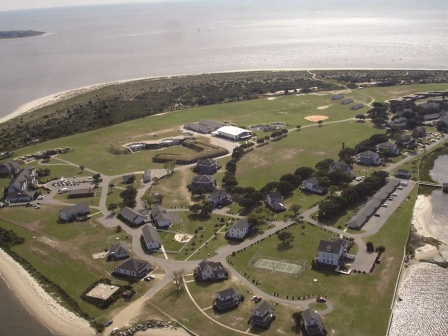
When Governor Ellis heard of the “invasions,” he ordered the Minute Men to return the forts immediately — North Carolina had not yet seceded. The Minute Men obeyed.
However, after the attack on Fort Sumter, the Cape Fear Minute Men retook forts Caswell and Johnson for North Carolina. Fort Caswell protected the blockade-runners of Fort Johnson and the port of Wilmington, which provided supplies for Confederate troops.
In their book detailing the fort’s history, Herring and Williams write that Fort Caswell saw no attacks during the Civil War and no Confederate soldiers died from enemy fire. However, yellow fever and other diseases caused most of the Confederate casualties, with the exception of a court-martialed deserter who was executed by a firing squad. Union soldiers did see injuries and casualties by the guns of Fort Caswell.
When Fort Fisher surrendered to Union forces in January 1865, General Whiting ordered soldiers at forts Caswell and Johnson to spike the guns and evacuate during the night.
The troops made their way to Fort Anderson in Brunswick Town on the Cape Fear River after destroying the forts.
The magazine explosions left Fort Caswell and its citadel crumbling. Reconstruction began in 1895; however, the battery builders were more focused on updating than restoring. Seven batteries, or smaller fortifications, were added to the fort.
The government used the fort and surrounding land as a training camp for soldiers who fought in France and Germany during WWI.
A Florida investor purchased the fort and surrounding land and turned it into a resort between 1937 and 1941. Instead of weapon-carrying soldiers, there were bathing suit-wearing vacationers. Two gun emplacements on Battery Caswell were converted into pools.
Below, the guests used the plotting and gunpowder rooms for dressing rooms.
“Swimsuits never looked the same after a swim in the mineral water!” Herring and Williams note.
In the wake of WWII, the U.S. Navy purchased Fort Caswell from the resort owners to serve as a submarine-tracking station, a training center, a communication center, a naval inshore patrol and a supply base. Fort Caswell also functioned as a holding area for wounded U.S. soldiers that were brought in by ship. The U.S. Navy discontinued use of Fort Caswell at the end of WWII.
“In 1949 the property was purchased by the Baptist State Convention of N.C. as a military surplus from WWII,” says Richard Holbrook, director of the N.C. Baptist Assembly at Fort Caswell. Most of the houses, barracks, mess halls and facilities built for the troops are still in use.
Military personnel from a nearby ocean terminal loading and unloading ships to and from the Gulf used Fort Caswell for housing during and after the Persian Gulf War in 1990-91, according to the Fort Caswell website.
The N.C. Baptist Assembly facilities are used year-round for summer camps, conferences and weekend retreats. “During the off-season, the grounds may be available for self-guided tours on weekdays,” Holbrook says.
“We are open to the public as much as possible.”
North Carolina’s coast has a vivid history in defense. These three forts are only a piece of the story. Other coastal forts have been dismantled or eroded away over time.
Visit the following websites to learn more about North Carolina’s coastal forts:
Fort Macon, Atlantic Beach: ncparks.gov/Visit/parks/foma/main.php and http://friendsoffortmacon.org/.
Fort Fisher, Kure Beach: www.ncparks.gov, www.nchistoricsites.org/fisher and www.friendsoffortfisher.com.
Fort Caswell, Oak Island: www.fortcaswell.com. Call before visiting: 910/278-9501.
Fort Anderson, Winnabow:https://historicsites.nc.gov/all-sites/brunswick-town-fort-anderson.
Fort Johnson, Southport: ncmaritimemuseumsouthport.com/.
Fort Raleigh, Manteo: www.nps.gov/fora.
This article was published in the Holiday 2012 issue of Coastwatch.
For contact information and reprint requests, visit ncseagrant.ncsu.edu/coastwatch/contact/.
- Categories:
